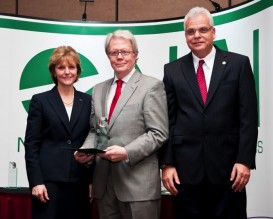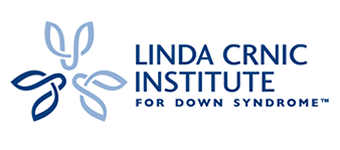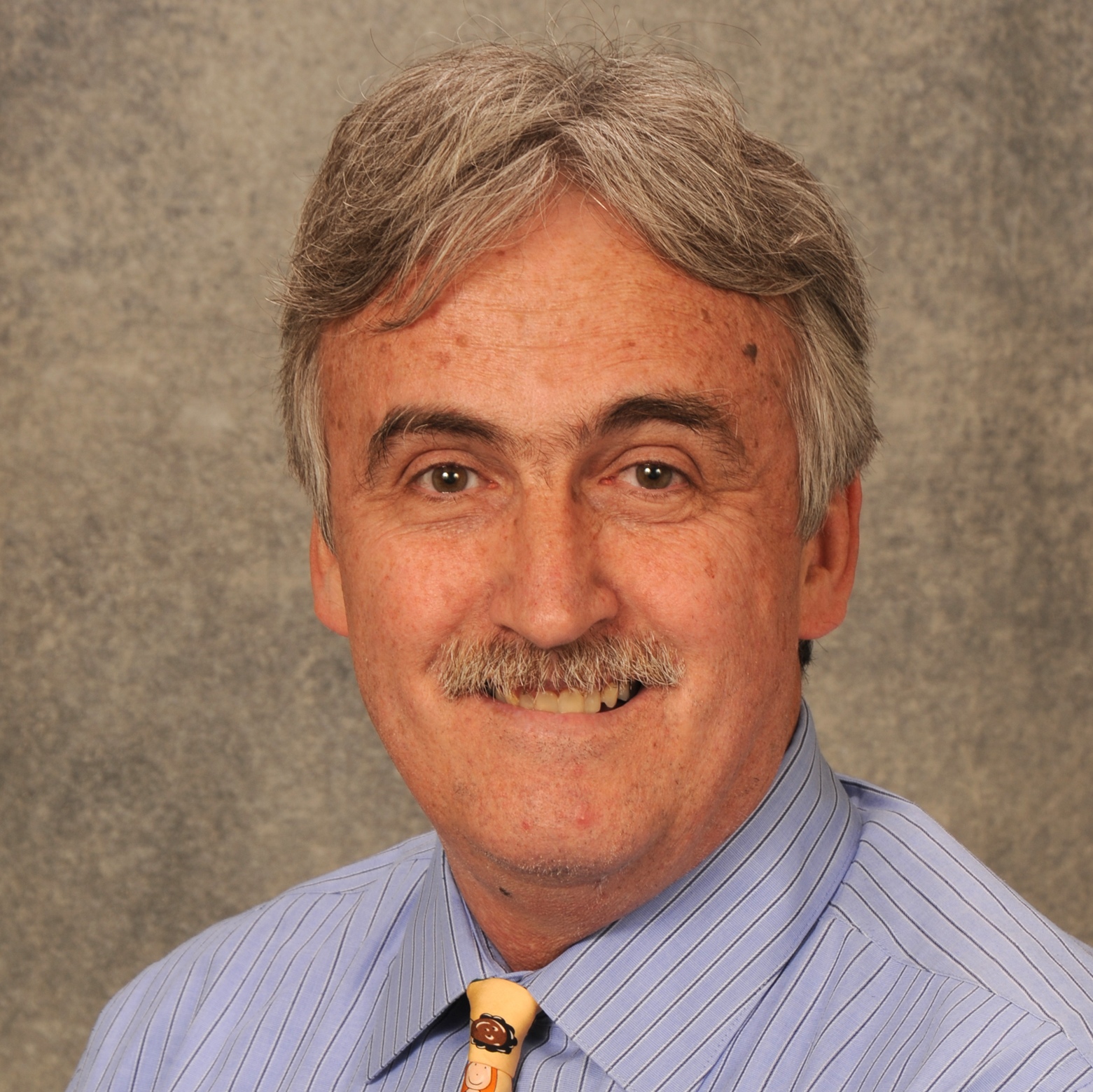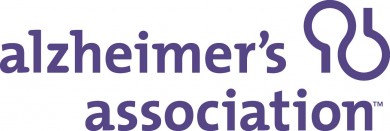Q&A with Dr. Francis Hickey
February 25th, 2014 by Global Down Syndrome Foundation
In recognition of Febuary as American Heart Month, the Global Down Syndrome Foundation held a Q&A with Francis Hickey, the Medical Director at the Anna and John J. Sie Center for Down Syndrome at Children’s Hospital Colorado and Linda Crnic Institute for Down Syndrome. Dr. Hickey has received one of the inaugural Crnic Institute Grand Challenge Grants, to study the pharmacokinetics of morphine in post-operative cardiac patients with Down syndrome.
1. Why do so many children with Down syndrome need to have heart surgery?
This is due to an increased percentage of heart defects in children with Down syndrome. Among the different patient populations with cardiac disease, the population with Down syndrome is unique. Approximately 40% of this patient group is born with congenital heart disease, often requiring repair within the first several years of life.
2. Please describe the nature of your research, in simple terms.
The primary goal is to improve the morphine management in patients with Down syndrome compared to those without Down syndrome before and after cardiac surgery. Measurement of morphine levels will be correlated with clinical findings in the post-operative time period to help understand pain medication needs.
3. How could your research end up benefiting people with Down syndrome?
This information will be essential in the management of post-operative pain and sedation in children with Down syndrome and congenital heart disease, as well as in general all children with Down syndrome in their pain management. This knowledge may also open a window in the challenging use of psychoactive medications in individuals with Down syndrome. Knowledge about the metabolism of morphine in these patients will guide dosing and therefore limit the clinical post-op risks and side effects these patients are exposed to in all clinical situations where pain control is needed.
Also, identifying the genetic locations which are involved in the metabolism of morphine in this patient population will lead to future understanding of the pharmacogenomics of patients with Down syndrome and assist in the development of studies leading to goal-oriented sedation protocols.
4. February is Heart Awareness Month. What heart-health advice do you have for people with Down syndrome and their families?
As with all children: Exercise regularly, eat healthy, and follow up with cardiologist as recommended.
5. How important is the Crnic Institute Supergroup in promoting collaboration?
This exciting collaboration is one of the few interactions nationally of researchers interested with basic research in Down syndrome with clinical researchers interested with the care and improved outcome of individuals with Down syndrome.
6. How important is the collaboration with The Heart Institute at Children’s Hospital Colorado?
The Sie Center for Down Syndrome collaboration with The Heart Institute at Children’s Hospital Colorado is vital to the outcome of individuals with Down syndrome with heart issues from birth on. Both clinics have ongoing interaction regarding the care of these patients. This current study is an example the collaboration of the Heart institute and the Sie Center for Down Syndrome.
7. Please tell us a little about yourself.
I grew up in Boston and am currently Medical Director at the Sie Center for Down Syndrome at Children’s Hospital Colorado. I received my undergraduate degree from Harvard University, medical degree at the University of Cincinnati College of Medicine, and completed my pediatric residency at Cincinnati Children’s Hospital Medical Center, with my fellowship in Developmental Pediatrics at Boston Children’s Hospital. In addition to my academic position for 25 years, I also was a primary care physician for 21 years in Pediatrics, including many children with special needs, including children with Down syndrome and autism. My research and clinical interests include Down syndrome clinical research, Down syndrome with the co-morbidity of autism, functional MRI application in Down syndrome, clinical database, and preterm infant outcome. My wife, Kris, and I have four children; the youngest, James, has Down syndrome and continues to teach us about life.
8. Is there anything else you’d like to add?
Our group would like to thank the Crnic Institute and Global Down Syndrome Foundation for the opportunity to hopefully open the window of pain medicine management during cardiac surgery in patients with Down syndrome as well as pain management in general.
Global, Alzheimer’s Association, Crnic Institute Announce $1.2 Million in Alzheimer’s-Down Syndrome Research Grants
October 29th, 2013 by Global Down Syndrome Foundation
The Global Down Syndrome Foundation, the Alzheimer’s Association, and the Linda Crnic Institute for Down Syndrome have awarded $1.2 million in research grants to five scientists for innovative investigations that explore the development of Alzheimer’s disease in individuals with Down syndrome. The goal is to eventually translate the findings into improved treatments for all people with Alzheimer’s.
The organizations are supporting this growing area of study through a new joint grants initiative called “Understanding the Development and Devising Treatments for Alzheimer’s Disease in Individuals with Down Syndrome.”
“The Alzheimer’s Association is very interested in understanding why people with Down syndrome are at such high risk for Alzheimer’s, and how it relates to other variations of the disease, so that we can identify new therapies to treat Alzheimer’s in both the Down syndrome and typical populations,” said Maria Carrillo, Ph.D., Alzheimer’s Association vice president of Medical and Scientific Relations. “Research in this population may also help us develop predictive tools for Alzheimer’s and design more effective clinical trials.”
“Investing with the Alzheimer’s Association has been so rewarding. The science our joint initiative is funding is of the highest caliber, and each grant approaches understanding, treating or preventing Alzheimer’s in people with Down syndrome from a very different angle. If initial results are promising, we hope that the National Institutes of Health will continue to fund this excellent science,” said Michelle Sie Whitten, executive director of the Global Down Syndrome Foundation.
Read more about the grant announcement, and learn about the researchers and their projects.
Crnic Institute to Co-Host Workshop on Cognition in Down Syndrome
April 10th, 2013 by Global Down Syndrome Foundation
 The Linda Crnic Institute for Down Syndrome will co-host the “Workshop on Cognition in Down Syndrome – Molecular, Cellular and Behavioral Features and the Promise of Pharmacotherapies” April 13-15 in Washington, D.C. The workshop will bring top scientists together to share discoveries and explore collaborations with the aim to improve the lives of people with Down syndrome.
The Linda Crnic Institute for Down Syndrome will co-host the “Workshop on Cognition in Down Syndrome – Molecular, Cellular and Behavioral Features and the Promise of Pharmacotherapies” April 13-15 in Washington, D.C. The workshop will bring top scientists together to share discoveries and explore collaborations with the aim to improve the lives of people with Down syndrome.
Katheleen Gardiner, Ph.D., a professor at the Crnic Institute and the University of Colorado School of Medicine’s Department of Pediatrics, is the workshop’s organizer. This is the third international workshop she has organized on Down syndrome and the biology of chromosome 21.
Gardiner received a grant from the Jérôme Lejeune Foundation to organize the workshop and the past two workshops she organized in 2004 and 2007. More than 130 experts from a variety of scientific disciplines are expected to attend the workshop.
“Our invited speakers are not Down syndrome researchers but may be interested in a specific gene on chromosome 21 or in some other type or specific feature of intellectual disability,” Gardiner said. “They may be persuaded to think about doing Down syndrome research and/or provide new ideas, research tools or perspectives to current Down syndrome researchers.”
Read the full press release, and view the workshop agenda and impressive lineup of speakers.
Crnic Institute for Down Syndrome Awards $1.3 Million in Grants
March 20th, 2013 by Global Down Syndrome Foundation
 The Linda Crnic Institute for Down Syndrome awarded $1.3 million to 14 inaugural recipients of the Crnic Grand Challenge Grants today. The grant recipients were chosen based on the strength of the science and the likelihood the science would lead to improving outcomes for people with Down syndrome.
The Linda Crnic Institute for Down Syndrome awarded $1.3 million to 14 inaugural recipients of the Crnic Grand Challenge Grants today. The grant recipients were chosen based on the strength of the science and the likelihood the science would lead to improving outcomes for people with Down syndrome.
The Crnic Grand Challenge Grants program was established earlier this year by Tom Blumenthal, Ph.D., executive director of the Crnic Institute. The grants are available to scientists from the University of Colorado system and were awarded to researchers from various disciplines at the University of Colorado at Boulder, and the University of Colorado Anschutz Medical Campus.
Thirty-six grant proposals were reviewed by an elite group of scientists.
“The decision on which grants to fund was incredibly difficult because of the diverse, meaningful research proposed by the scientists,” Blumenthal said. “We had initially planned to fund 10 grants totaling $1 million for the first year, but we funded $1.3 million for 14 because of the truly impactful research that was proposed and is now being funded.”
Read the full press release and see a full list of the grants.
Huntington Potter of Crnic Institute Named a Charter Fellow at National Academy of Inventors
March 14th, 2013 by Global Down Syndrome Foundation
 Huntington Potter, Ph.D., Director of Alzheimer’s Research at the Linda Crnic Institute for Down Syndrome and the University of Colorado School of Medicine’s Department of Neurology, was inducted into the National Academy of Inventors by being named a Charter Fellow.
Huntington Potter, Ph.D., Director of Alzheimer’s Research at the Linda Crnic Institute for Down Syndrome and the University of Colorado School of Medicine’s Department of Neurology, was inducted into the National Academy of Inventors by being named a Charter Fellow.
Potter’s groundbreaking research in the field of Alzheimer’s disease led to the discovery of the mechanistic relationship between Alzheimer’s and Down syndrome. During his esteemed career, he invented the first practical electroporation device for making transgenic organisms and has been awarded 15 U.S. patents, including several on diagnosing and treating Alzheimer’s disease.
Potter is among 101 innovators from 56 research universities and nonprofit institutes to be inaugural fellows and was inducted by the United States Commissioner of Patents, Margaret A. Focarino, at the 2nd Annual Conference of the National Academy of Inventors on Feb. 22 in Tampa, Fla. Inductees include eight Nobel Prize winners, and four recipients of the National Medal of Science, including Robert Gallo, who co-discovered the HIV virus, Solomon Snyder, who discovered the mechanism of addiction, and Nick Holonyak, who invented the first practical LED.
“Throughout his career, Huntington Potter has demonstrated the leadership and innovation the selection committee looked for in charter fellows,” said Paul Sanberg, president of the National Academy of Inventors and senior vice president for Research & Innovation at the University of South Florida. “His work has contributed materially to the understanding and treatment of Alzheimer’s disease — in particular, his discoveries regarding amyloid formation and Alzheimer’s connection to Down syndrome were breakthroughs in the field.”
Potter’s recent research includes the GM-CSF treatment for Alzheimer’s, which involves the drug Luekine. GM-CSF is a protein that is secreted by patients with rheumatoid arthritis that may help explain why those patients rarely develop Alzheimer’s disease. Mice with Alzheimer’s disease that have been injected with Leukine were cured, and the invention is being proposed as a treatment for Alzheimer’s in humans, with clinical trials underway in Tampa and soon to follow in Denver.
Read the full press release on the Global Down Syndrome Foundation’s press page.
$1.2 Million in Grants for Alzheimer’s, Down Syndrome Research
November 29th, 2012 by Global Down Syndrome Foundation
![]() The Alzheimer’s Association, the Linda Crnic Institute for Down Syndrome and the Global Down Syndrome Foundation today launched a new research initiative to better understand the development of Alzheimer’s disease in individuals with Down syndrome (DS) and translate the research into improved treatments for people at risk to develop Alzheimer’s.
The Alzheimer’s Association, the Linda Crnic Institute for Down Syndrome and the Global Down Syndrome Foundation today launched a new research initiative to better understand the development of Alzheimer’s disease in individuals with Down syndrome (DS) and translate the research into improved treatments for people at risk to develop Alzheimer’s.
 The organizations are making a total of $1.2 million available for new research projects, and have issued a Request for Applications (RFA) titled Understanding the Development and Devising Treatments for Alzheimer’s Disease in Individuals with Down Syndrome.
The organizations are making a total of $1.2 million available for new research projects, and have issued a Request for Applications (RFA) titled Understanding the Development and Devising Treatments for Alzheimer’s Disease in Individuals with Down Syndrome.
![]() “Through this new initiative, we hope to better understand the mechanisms that lead to Alzheimer’s in people with Down syndrome in order to get us a big step closer to new treatments,” said William Thies, Ph.D., Alzheimer’s Association chief medical and scientific officer. “The eventual goal is to advance the charge toward better Alzheimer’s therapies for people with Down syndrome and for people without it.”
“Through this new initiative, we hope to better understand the mechanisms that lead to Alzheimer’s in people with Down syndrome in order to get us a big step closer to new treatments,” said William Thies, Ph.D., Alzheimer’s Association chief medical and scientific officer. “The eventual goal is to advance the charge toward better Alzheimer’s therapies for people with Down syndrome and for people without it.”
“We’re pleased to have leaders that represent a significant scientific brain trust leading this program, and we are grateful to have the scientific review apparatus and peer reviewers provided by the Alzheimer’s Association,” said Michelle Sie Whitten, Executive Director of the Global Down Syndrome Foundation.
To read the full press release, click here.
Down Syndrome Research Expanding Across the U.S.
August 7th, 2012 by Global Down Syndrome Foundation
 The University of Arizona announced it has received more than $1 million in grant funding over the past four years as its Down Syndrome Research Group works toward being a leader in Down syndrome research. The funding came from the Down Syndrome Research and Treatment Foundation and Research Down Syndrome.
The University of Arizona announced it has received more than $1 million in grant funding over the past four years as its Down Syndrome Research Group works toward being a leader in Down syndrome research. The funding came from the Down Syndrome Research and Treatment Foundation and Research Down Syndrome.
At the Global Down Syndrome Foundation, our primary focus is funding the Linda Crnic Institute for Down Syndrome at the Anschutz Medical Campus, and we’re encouraged by the expansion of research efforts across the U.S. and excited to see what comes out of the new efforts and the potential for collaboration. Because Down syndrome is the least-funded genetic condition by the National Institutes of Health, it is crucial to show that the need, desire and support exist to fund more research.
At the University of Arizona, faculty, staff and students will focus on a broad range of topics, from medical and health care issues to quality-of-life problems faced by those with Down syndrome and their families.
Like the Crnic Institute, which recently added renowned scientist Huntington Potter to focus on the link between Alzheimer’s disease and Down syndrome, the University of Arizona plans to give a lot of attention to that issue. Studies show that one the main genes responsible for Alzheimer’s disease is on the 21st chromosome and is therefore more active in people with Down syndrome, who have three copies of chromosome 21 instead of two.
A lot of progress has been made on care and research, but we still have a long way to go. News about this kind of funding highlights the growing support for the Down syndrome community. Let’s encourage each other to keep up the pressure for more government funding and spread the word about all the potential that research holds. You can reach our advocacy page here to learn more about how to contact your representative in Congress.
Teaching Motor Skills to Children Translates Across Languages
August 3rd, 2012 by Global Down Syndrome Foundation
 Parents struggling with how to help their kids with Down syndrome learn to walk, balance, run and climb are getting help from a recent workshop that’s being touted in multiple languages.
Parents struggling with how to help their kids with Down syndrome learn to walk, balance, run and climb are getting help from a recent workshop that’s being touted in multiple languages.
Pat Winders, senior physical therapist at the Anna and John J. Sie Center for Down Syndrome at Children’s Hospital Colorado, led sessions on “Gross Motor Development in Children with DS” at the National Down Syndrome Congress’ national convention in Washington, D.C. One of the people in attendance was Ana Virginia Garroni, the mother of 3-year-old Otto and the author of a popular South American blog, “El Mundo de Otto,” or “The World of Otto.”
The workshop was offered with simultaneous interpretation, and now Garroni is helping spread the word in Spanish of best care practices and intervention strategies back home in Venezuela.
“Children with Down syndrome want to do what all children want to do,” Winders says on her biography at the Crnic Institute. “They want to learn to sit, crawl, walk, explore the environment, and interact with the people around them.”
Since joining the Sie Center in December of 2007, Winders has seen nearly 250 patients and has launched several programs with the Global Down Syndrome Foundation, including the Be Beautiful Be Yourself Dance Class with the Colorado Ballet and the Ed McCaffrey Dare to Play Football and Cheer Camps. Her position at the Sie Center has allowed her to mentor other physical therapists, participate in important gross motor skills research, and update the definitive book that she researched and wrote — Gross Motor Skills in Children with Down Syndrome: A Guide for Parents and Professionals.
The Sie Center for Down Syndrome is part of the Linda Crnic Institute for Down Syndrome at the Anschutz Medical Campus in Aurora, Colorado.
Research Evaluates Care for Adults With Down Syndrome
August 1st, 2012 by Global Down Syndrome Foundation

Kristin Jensen, M.D., M.Sc.
The scientists at the Linda Crnic Institute for Down Syndrome are producing groundbreaking research into the care and treatment of people with Down syndrome. Kristin Jensen, M.D., M.Sc., an assistant professor at the Crnic Institute, had two studies published this year in the Journal of Intellectual Disability Research that help identify how patients with Down syndrome are transitioning into adult-oriented health care from child-focused providers, and whether the primary care physicians of adults with Down syndrome are adhering to age- and condition-specific preventive care. Both studies were conducted before her arrival at the University of Colorado.
In research published July 10 (click here for the abstract of the study and information on accessing the full article), Drs. Jensen and Davis found that over half of the adults studied showed incomplete transition from child to adult medical care, which may be a troubling sign as people with Down syndrome live longer lives (the average life expectancy is now over 50). Many of these patients continued to see pediatric specialty providers. Despite accounting for indicators of clinical severity, the authors found that those patients who received a mix of child- and adult-focused care ended up with higher annual charges. This was felt to be a proxy for complexity of illness that is unable to be measured in retrospective studies.
In a study published March 28 (click here for the abstract of the study and information on accessing the full article), Drs. Jensen, Taylor and Davis looked into how primary care physicians at academic medical centers adhered to age- and condition-specific care for a cohort of adults with Down syndrome. This study found variable adherence to published guidelines within this cohort, but found no difference between the type of primary care physician (i.e.- Family Medicine or Internal Medicine). Additionally, less than half of the patients in this cohort received evaluations for obstructive sleep apnea or hearing or vision loss over an eight-year study, all of which are commonly seen among people with Down syndrome.
Both studies called for additional research into how these findings relate to patient outcomes.
The Linda Crnic Institute, founded in 2008, is the first academic home for Down syndrome research in the United States. It is located at the Anschutz Medical Campus in Aurora, Colorado.
Linda Crnic Institute Funds Study on Drug’s Potential to Improve Verbal Memory of People With Down Syndrome
July 31st, 2012 by Global Down Syndrome Foundation
Dan Hurley of The Washington Post has a great article about researchers’ hopes for eventually finding a drug to improve the verbal memory of people with Down syndrome, including a study funded in part by the Linda Crnic Institute for Down Syndrome at the University of Colorado.
A study in the journal Translational Psychiatry tested the effects of memantine, a drug approved under the name Namenda for the treatment of Alzheimer’s disease, on people with Down syndrome.
A trial conducted by Alberto Costa of the University of Colorado Denver and funded by the Crnic Institute, Forest Laboratories (the maker of Namenda), the National Institutes of Health and the Coleman Institute for Cognitive Disabilities involved 42 young adults with Down syndrome, with half receiving the drug and half getting a placebo over a 16-week period.
Although Costa’s study found no significant differences between the memantine and placebo groups on two primary measures, “we found a significant improvement in the memantine group in one of the secondary measures,” the study says.
Some scientists who specialize in Down syndrome research told The Washington Post they consider the results disappointing, but others noted that it’s the first time any improvement has been noted in a drug study.
“You can see it as a little study that had a little tiny effect, or as one of the greatest findings in Down syndrome over the past 10 years. Both are true,” Costa told The Washington Post, adding that he wants another, larger study of Namenda.
The full Washington Post article can be found here.
The study can be accessed here.




 Experience our inspirational and groundbreaking videos and photos. Our children and self-advocates are beautiful AND brilliant!
Experience our inspirational and groundbreaking videos and photos. Our children and self-advocates are beautiful AND brilliant! Make sure your local Representatives are on the Congressional Down Syndrome Task Force.
Make sure your local Representatives are on the Congressional Down Syndrome Task Force.